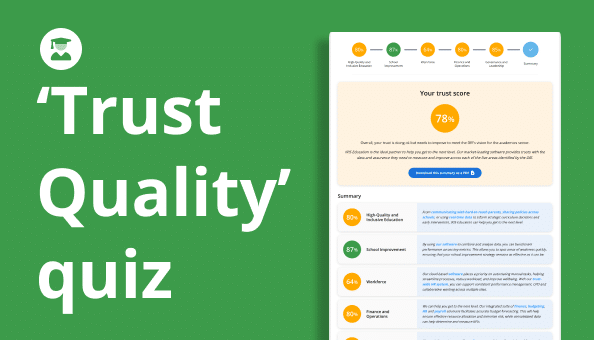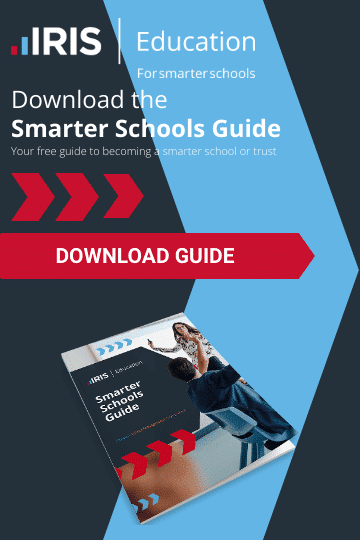BLOGS
How software can help tackle rising school absences

In recent months, ever-increasing student absenteeism has been referred to as the new epidemic facing schools.
Prior to the pandemic, school absence rates hovered around 4.7%, but according to the DfE, these rates have now risen to 7.5%.
To make matters worse, the rates for persistent absenteeism in which students miss 10% or more of classes has doubled, skyrocketing from 10.9% in 2018-19 to 22.5% last year.
In an interview with us, Road Primary School’s Headteacher, Gavin MacGregor, confirms the post-pandemic narrative, stating Covid had an impact, both for the better and worse, but since coming back, attendance has undoubtedly been an issue for them.
Of course, while rates differ between schools, the picture is clear: absence rates aren’t going down.
Why are student absences on the rise?
The story differs depending on the source.
An Education Committee inquiry cites economic disadvantages and SEND requirements as causes for plummeting school attendance.
While DfE data highlights illness rates have doubled post-pandemic – perhaps with many parents now working from home, a more relaxed attitude has been adopted regarding students staying home when under the weather.
However, the Guardian claims an increase in anxiety and a lack of mental health support are to blame.
In the Guardian’s article, they showcased the following comment from Essex council: “We have noted significant growth in the cohort of children and families who struggle to leave their home. Some of these families were experiencing anxiety prior to the pandemic, but many of the current mental health and anxiety presentations appear to have developed during the pandemic/lockdown periods.”
There’s no clear answer, with the waters muddied, but it’s clear action is needed.
The introduction of Attendance Hubs
To try tackle the rise in absenteeism, the Government has plans to introduce an Attendance Hub programme with nine new lead hub schools, alongside the expansion of Attendance Mentors in areas of the country with the highest levels of pupil absence.
These new Attendance Hubs aim to support up to 600 primary, secondary and alternative provision schools in England, sharing effective practices and resources.
Schools Minister, Nick Gibb, stated: “We know that the best place for children to learn is in the classroom, and the vast majority of children are currently in school and learning. That is why we’re expanding some of our most important attendance measures – including the attendance hubs and mentoring programmes, to ensure children have the best chance of receiving a high-quality education.”
How software can help tackle the student absences issue
Hopefully, Government measures will help in the long term; but the question remains, what can individual schools and trusts do now?
Software can provide tools to make an immediate difference.
Here’s how IRIS Education can help:
Automate absence flagging
Our automated calling software, IRIS Absence Call, gives you the tools to tackle absenteeism, reduce unauthorised absences and improve punctuality.
Integrating with any Management Information System (MIS), IRIS Absence Call automatically flags any unexpected absences before automating first-point-of-contact via phone call, text or email.
The tool works especially well for strengthening parent-school partnerships, especially with hard-to-reach families.
Thanks to the inclusive design, parents are empowered to communicate with their child’s school for free, at a time and via a method that suits them.
Parents not responding? IRIS Absence Call continues to make contact until a response is received, freeing up busy teams from making time-consuming phone calls and ensuring parents are alerted quickly.
More content: 6 tips for communicating with parents
Read hereLocate trends and warning signs before they escalate
Can anything be done to tackle absenteeism proactively? We believe the answer lies in connected data.
Schools hold a wealth of information about their pupils.
When correlated together, this data has the potential to paint a very accurate picture of problems, such as absenteeism, before they escalate.
However, with roughly 90% of school leaders citing obtaining and analysing data as a major issue, what can actually be done?
Well, modern data consolidation and reporting tools, such as IRIS Central, offer schools and MATs a unified view of all their data, so real-time decisions can be made with haste and the causes of absenteeism can be tackled directly.
Take, for example, if you view attendance in isolation for one pupil, you might see they've not been there every Friday, but you won't know why.
However, if you also saw their dinner money balance and that it was in deficit for months, you might suspect issues at home – likewise, if you saw their parental communication history had stopped two weeks ago.
Putting the pieces of a story together to tackle issues such as increasing absenteeism is extremely difficult when data is fragmented, but with tools like IRIS Central, you can quickly aggregate all your data in one location, ensuring crucial information is easily accessible.
IRIS Central - your control tower for more effective trust management
Learn moreMore than the old-fashioned round-up
Traditional attendance enforcement feels quite outdated, doing little more than rounding students up and chucking them back through the gate.
First and foremost, student welfare must be prioritised; through the effective use of EdTech, student wellbeing can be better supported and root causes can be tackled directly.













